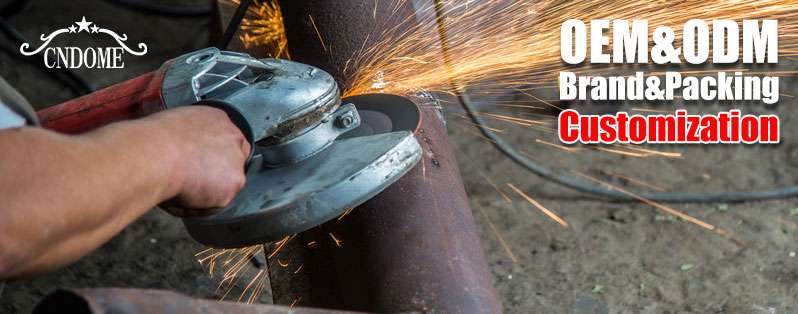When working with cast iron, a notoriously tough and brittle material, choosing the right cutting blade is crucial for achieving clean, efficient cuts. Cast iron’s hardness, combined with its tendency to break rather than bend, can make it challenging to cut with traditional tools. In this blog, we’ll explore the different types of cutting blades designed for cast iron and how to choose the best one for your needs.
Challenges of Cutting Cast Iron
Cast iron contains high amounts of carbon, giving it a hard, brittle nature that makes it prone to cracking or chipping under stress. The material also generates significant heat during cutting, which can lead to rapid wear of the cutting tools. Therefore, cutting blades must be tough enough to handle both the hardness and heat while maintaining precision.
Types of Cutting Blades for Cast Iron
1.Diamond Blades Diamond blades are the most common choice for cutting cast iron. These blades feature a cutting edge embedded with industrial diamonds, which are the hardest materials available. The diamond coating allows the blade to cut through cast iron smoothly, minimizing wear and increasing the blade’s lifespan. Diamond blades are especially effective for making long, continuous cuts in cast iron pipes or structures.
Advantages:
- Extreme durability
- Fast cutting with minimal heat buildup
- Long lifespan
Disadvantages:
- Higher cost compared to other blade types
- Can chip if not used with the right technique
2.Abrasive Blades Abrasive blades are composed of a mix of resin and abrasive materials, such as aluminum oxide or silicon carbide. These blades are affordable and widely available, making them a popular choice for smaller projects involving cast iron. While they aren’t as long-lasting as diamond blades, abrasive blades can still get the job done, especially for intermittent or occasional use.
Advantages:
- Cost-effective
- Good for short, quick cuts
- Widely available
Disadvantages:
- Shorter lifespan compared to diamond blades
- Generates more heat during cutting, which may cause blade wear
3.Carbide-Tipped Blades Carbide-tipped blades are less common but still effective for cutting cast iron. These blades feature carbide teeth, which are extremely hard and heat-resistant, allowing them to cut through cast iron with relative ease. While carbide-tipped blades are more affordable than diamond blades, they are typically used for smaller or less frequent cuts.
Advantages:
- Heat-resistant and durable
- Suitable for cutting tough materials
- Affordable alternative to diamond blades
Disadvantages:
- Can wear out quickly when used on large sections of cast iron
- Less effective for long, continuous cuts
Factors to Consider When Choosing a Blade
- Project Scope: For larger projects requiring multiple cuts or extended use, diamond blades provide the durability and performance necessary to complete the job. For smaller or occasional tasks, abrasive or carbide-tipped blades can offer a more economical solution.
- Cutting Speed: Diamond blades cut faster and smoother, minimizing heat buildup and reducing the risk of damaging the blade or material. Abrasive blades tend to cut slower and generate more friction, which can lead to wear and tear on both the blade and cast iron.
- Cost: Diamond blades are a significant investment, but they offer greater longevity and performance. Abrasive blades are budget-friendly but may need to be replaced more frequently, depending on the scope of the project.
- Blade Size: Always ensure that the blade size matches your cutting tool or saw. Most cutting blades come in standard sizes, such as 4-1/2”, 7”, and 14”, with larger blades generally being more suited for heavy-duty, continuous cutting.
Conclusion
Cutting cast iron requires careful blade selection to ensure clean cuts, minimize heat buildup, and extend the life of the blade. Diamond blades offer superior performance and longevity, making them ideal for larger projects, while abrasive and carbide-tipped blades are more suited for short-term or smaller-scale tasks. By understanding the unique properties of cast iron and choosing the right cutting blade, you can achieve better results and make your job easier.
For more advice or to find the right cutting blade for your next cast iron project, feel free to reach out to experts or explore different blade types at your local hardware store.



